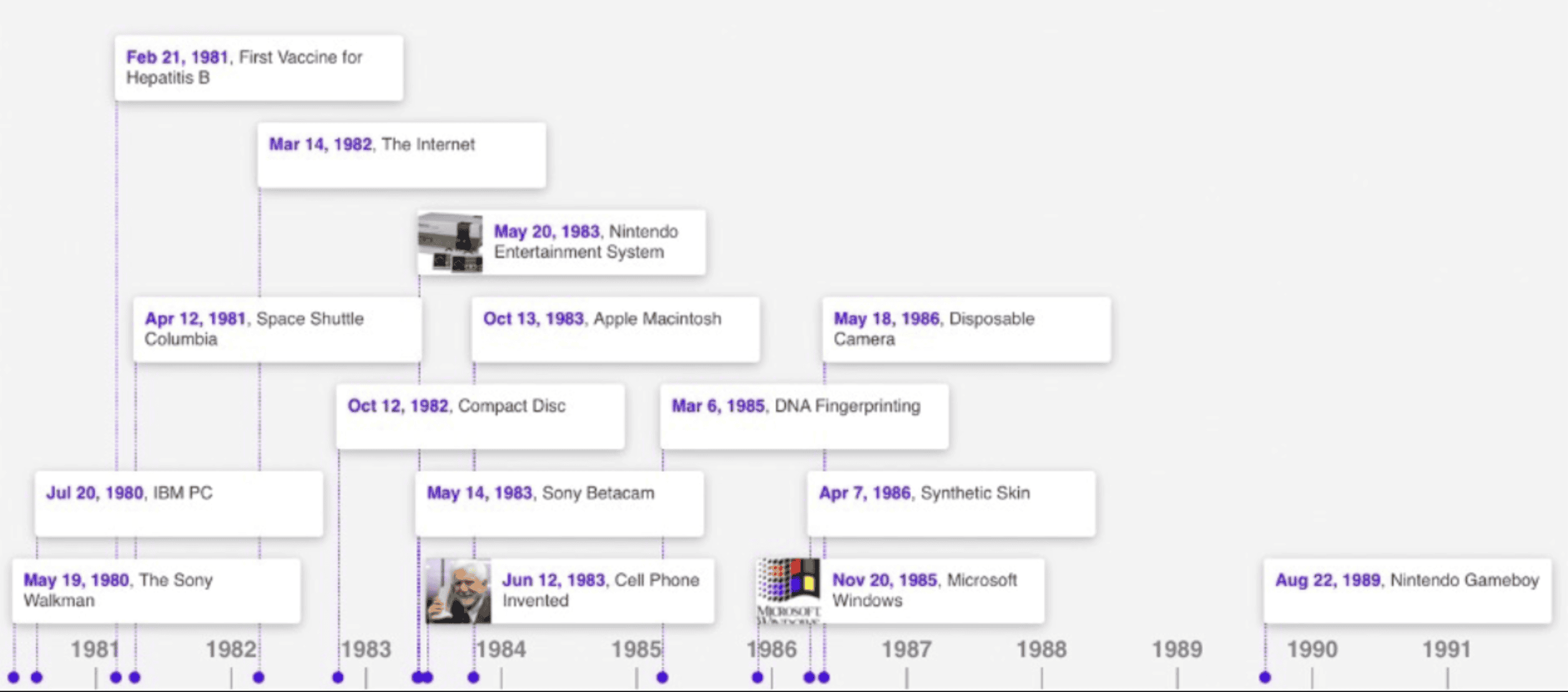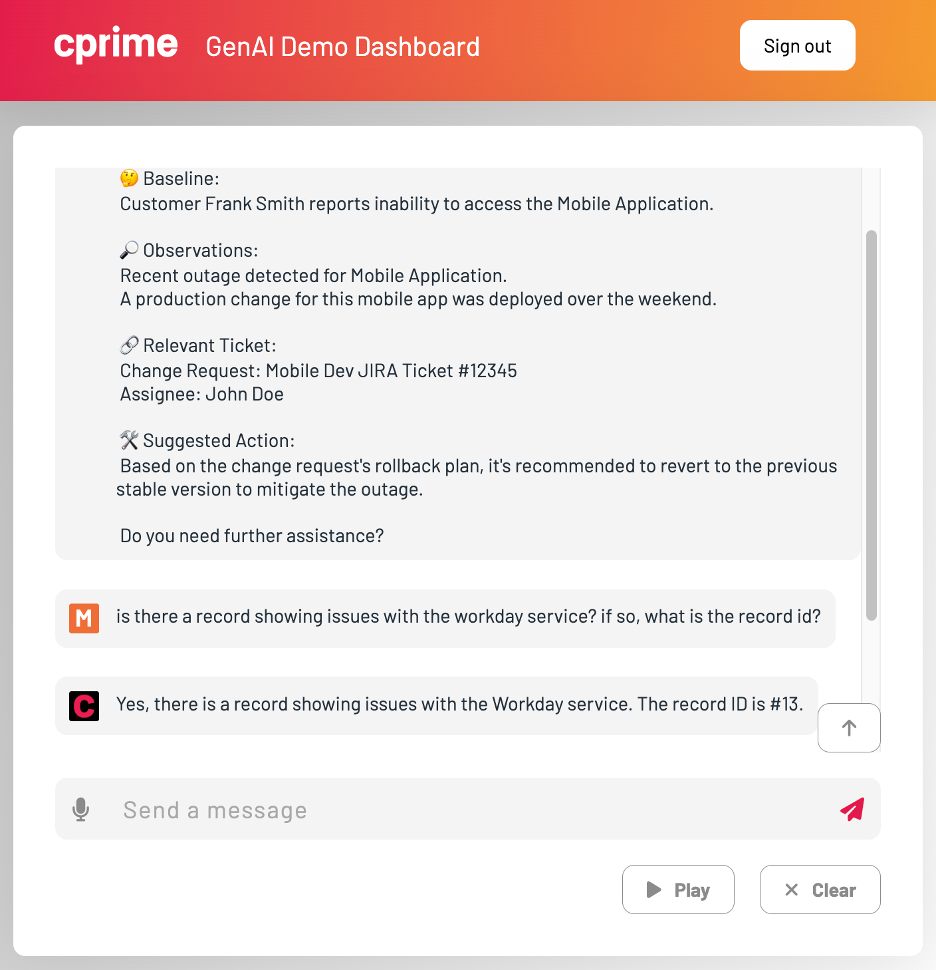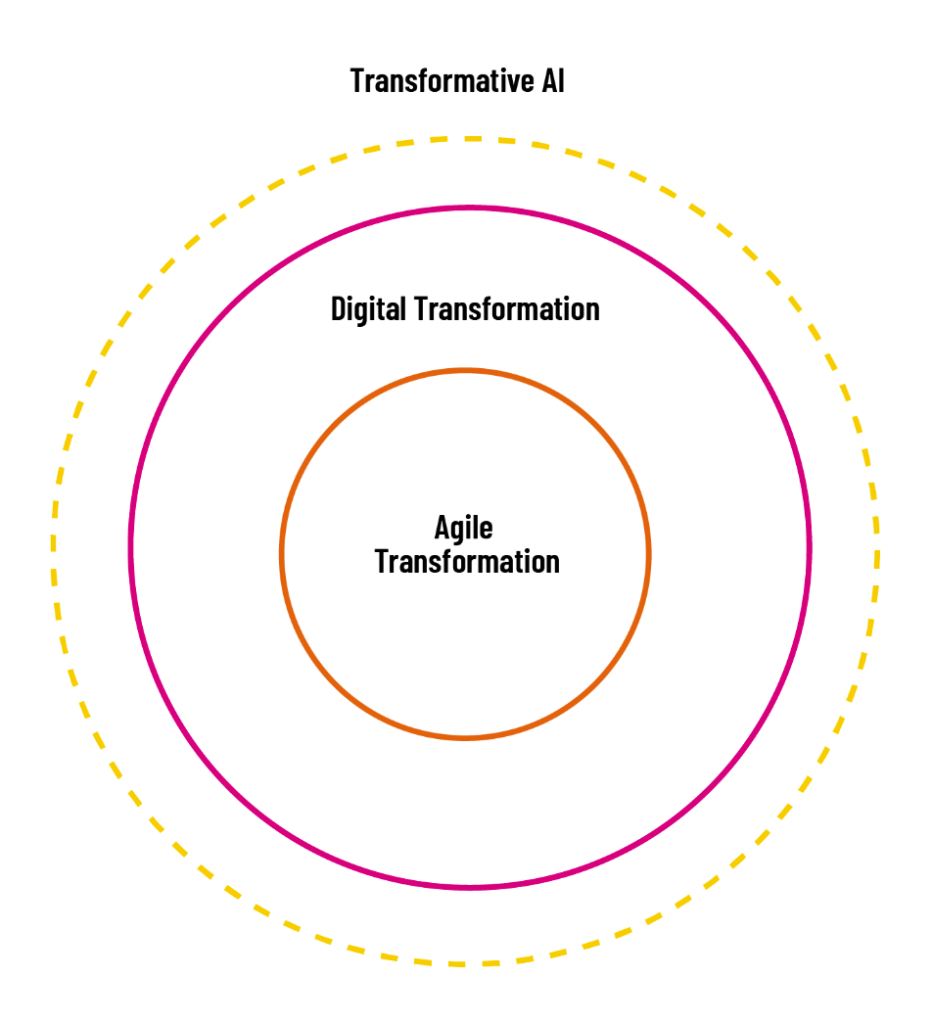Steps in a typical Generative AI Services engagement:
-
Discovery and Assessment: Collaborate with clients to understand their unique challenges, goals, and current technology stack to tailor AI solutions that align with strategic objectives.
-
AI Solution Design: Design a flexible AI solution that may be bespoke or involve off-the-shelf products, integrating AI into existing workflows or developing new AI-driven processes and tools.
-
Implementation and Integration: Work with in-house engineering teams to implement the AI solution, focusing on the technical aspects of software development and ensuring seamless integration into the client’s operational landscape.
-
Training and Enablement: Provide comprehensive training and enablement through hands-on workshops, certification courses, and immersive learning experiences to upskill teams and foster an environment of continuous learning.
-
Continuous Improvement and Support: Offer ongoing support and optimization services post-deployment to help clients adapt and evolve their AI capabilities, ensuring they maintain a competitive edge.
-
Measuring Success: Establish success metrics, conduct regular check-ins to track progress, and adapt strategies as needed to ensure the AI solutions are meeting business objectives and delivering long-term value.
Businesses across the globe are on a relentless quest to harness the transformative power of artificial intelligence. Generative AI, with its unparalleled ability to create, optimize, and innovate, is at the forefront of this revolution. Cprime, a vanguard in consulting and training for performance optimization, is uniquely positioned to guide enterprises through the intricacies of AI adoption and integration.

Our GenAI experts at Cprime specialize in demystifying the complexities of AI, making it accessible and actionable for businesses, especially in the Banking and FinServ, Insurance, Manufacturing, Healthcare, and Software sectors. With a deep understanding of the challenges and opportunities within these industries, we tailor our approach to meet the ambitious goals of global enterprises seeking to modernize their technology landscape.
The journey with Cprime’s GenAI services unfolds through a series of strategic phases, each designed to ensure that your engagement with AI is as seamless as it is impactful. From the initial discovery and assessment to the meticulous design of AI solutions; from the hands-on implementation and integration to comprehensive training and enablement; and finally, to ongoing support for continuous improvement—our generative AI services model is a testament to our commitment to your success.
As we delve into the specifics of what to expect from Generative AI services with Cprime, we invite you to envision a partnership that not only elevates your technological capabilities but also aligns with your strategic vision for growth and innovation. Join us on this transformative journey, where the convergence of performance optimization best practices and cutting-edge AI technology propels your organization into a future brimming with possibilities.
Discovery and Assessment
Every successful journey begins with a map, and in the realm of Generative AI, this map is charted through a meticulous discovery and assessment phase. At Cprime, we initiate our engagement by partnering with you to gain a comprehensive understanding of your unique landscape—your challenges, aspirations, and the technological heartbeat of your enterprise.
Understanding Your Challenges: Our GenAI experts engage in deep-dive sessions with your team to identify the pain points and bottlenecks that hinder your operational efficiency. We listen intently to grasp the nuances of your business needs, ensuring that the AI solutions we propose are not just innovative but also pragmatic and relevant.
Aligning with Your Goals: Your strategic objectives are the cornerstone of our assessment. We align our AI initiatives with your vision, whether it’s to disrupt the market, enhance customer experience, or streamline internal processes. Our goal is to design solutions that not only meet but exceed your expectations.
Evaluating Your Technology Stack: A thorough evaluation of your current technology infrastructure is critical. We assess the compatibility, scalability, and readiness of your systems to integrate with AI technologies. This step is vital to ensure that the solutions we design can be seamlessly adopted, providing a smooth transition and a strong foundation for future innovations.
Tailoring AI Solutions: The insights gathered during the discovery and assessment phase culminate in a blueprint for a tailored AI solution. This blueprint is the first step in transforming your business, crafted to align with your strategic objectives and to set the stage for the next phase of our engagement—AI Solution Design.
By the end of this initial phase, you will have a clear vision of the path forward, marked by a solution that is as unique as your business. With Cprime’s GenAI experts by your side, you’re not just prepared for the future; you’re shaping it.
AI Solution Design
With a clear understanding of your enterprise’s unique needs and goals, Cprime’s journey of innovation transitions into the AI Solution Design phase. Here, the fusion of agile methodologies and AI expertise comes to life, as we craft a solution that is not only robust and scalable but also perfectly aligned with your business objectives.
Bespoke and Off-the-Shelf Solutions: Our approach to design is as flexible as it is precise. We recognize that some scenarios demand entirely bespoke solutions, meticulously engineered to fit your specific requirements. In other instances, the most efficient path to innovation may involve leveraging and customizing off-the-shelf AI products. Our experts are adept at navigating this spectrum, ensuring the right fit for your organization. (See Spotlight On OptiPrimeAI™ below.)

Integration into Existing Workflows: The true power of AI is realized when it becomes an integral part of your daily operations. Our designs often include the integration of AI into existing workflows, enhancing efficiency and decision-making without disrupting the rhythms of your business. This thoughtful integration strategy is key to achieving a seamless transition and immediate impact.
Development of New AI-Driven Processes: In the spirit of transformation, we also look beyond the present, designing new AI-driven processes that propel your business into the future. These innovative processes are developed with an eye towards scalability, adaptability, and the ever-evolving landscape of your industry.
Creation of AI-Powered Tools and Applications: The tangible outputs of our AI Solution Design phase are the tools and applications that will drive your business forward. Whether it’s a custom analytics platform, an intelligent automation system, or a predictive modeling tool, each solution is engineered to unlock new capabilities and insights for your enterprise.
Spotlight on OptiPrimeAI™
OptiPrimeAI is Cprime’s proprietary private LLM chatbot and platform, which we’ve designed for our own internal use as well as targeted customized deployment for use internally by our clients.
As we navigate the AI Solution Design phase, our focus is on identifying the most effective path to bring generative AI into your business operations. If our analysis suggests that our proprietary OptiPrimeAI could be the right fit, we propose a structured approach to validate its impact through a Proof of Concept (POC), followed by a pilot project that leads to an initial production solution.
Proof of Concept: We initiate with a POC that is designed to be low-risk and high-value, allowing us to demonstrate the capabilities of OptiPrimeAI in a controlled environment. This step is crucial for ensuring alignment with your business objectives and for setting clear expectations for the pilot project.
Pilot Project: Upon a successful POC, we transition to a pilot project, which serves as a bridge between the initial trial and a full-scale production solution. This pilot is crafted to be a private cloud-based implementation, running securely within Cprime’s AWS Virtual Private Cloud (VPC). This approach allows us to maintain a focus on security and privacy while providing a real-world assessment of the AI’s performance.
Initial Production Solution: The pilot project’s success leads to the deployment of an initial useful production solution. This solution is designed to handle less sensitive tasks, setting the stage for future, more complex projects. It’s a strategic step that allows your team to familiarize themselves with the AI’s functionality and benefits without the overhead of a fully private LLM or extensive on-site services.
We position this phased approach as a journey that starts with less sensitive applications, allowing us to collectively “kick the tires” before gradually moving towards more sensitive and complex projects. The vision we sell is one of a future-proof AI ecosystem that may include a blend of public and private LLMs, connectors to your internal data sources, and potentially on-site services. However, to simplify the initial adoption phase, we utilize a VPC approach, ensuring an easy and accessible start.
This strategy ensures that the user experience remains consistent and familiar, even as we scale or transition services to different locations, such as your data center, colocation facility, or VPC. It’s about making the first step as easy as possible, with the reassurance that the foundational experience won’t change as we progress towards a more integrated and comprehensive AI deployment.
The AI Solution Design phase is where your vision starts to take shape, molded by the hands of Cprime’s seasoned experts. It’s a collaborative and iterative process, one that ensures the final design is not just a theoretical blueprint but a practical roadmap to success. With the foundation laid, we move forward to the next critical phase—Implementation and Integration—where your AI solution comes to life.
Implementation and Integration
Transitioning from design to reality, the Implementation and Integration phase is where Cprime’s expertise truly shines. Our team of skilled engineers and consultants collaborate closely with your in-house engineering resources to bring the AI solution to life within your enterprise.
Collaborative Implementation: The implementation process is a collaborative effort. Cprime’s experts work side by side with your team, ensuring knowledge transfer and alignment at every step. This partnership approach not only facilitates a smooth implementation but also fosters a sense of ownership and ease of adoption among your staff.

Technical Development: At the core of this phase is the technical development of the AI solution. Our engineers meticulously code, configure, and customize the AI technologies, adhering to the highest standards of software development. We ensure that the solution is robust, secure, and scalable, ready to meet the demands of your dynamic business environment.
Seamless Integration: Integration is more than a technical challenge; it’s about ensuring the AI solution fits naturally into your operational landscape. We take great care to minimize disruption, aligning the new AI capabilities with your existing systems and processes. Our goal is to enhance, not overhaul, your workflow, allowing for a transition that is as smooth as it is transformative.
Operational Fit: The success of an AI solution is measured not just by its technical prowess but by how well it fits within the day-to-day operations of your business. Cprime’s consultants are there to guide this fit, ensuring that the solution is intuitive, user-friendly, and enhances the productivity of your teams.
As we navigate through the Implementation and Integration phase, Cprime remains committed to delivering an AI solution that not only integrates with your current systems but also sets the stage for future growth and innovation. With the technical foundation in place, we turn our attention to empowering your teams to harness the full potential of AI through Training and Enablement.
Training and Enablement
The true value of an AI solution is realized only when it is fully leveraged by those who use it daily. Cprime’s commitment to your success extends beyond implementation, focusing on Training and Enablement around generative AI and other AI topics to ensure your team is equipped to maximize their new capabilities.
Hands-On Workshops: Cprime offers hands-on workshops tailored to your specific AI solution and business context. These sessions are designed to be interactive and engaging, providing your team with practical experience and confidence in using the new tools and processes.
Certification Courses: To further endorse the skills and knowledge acquired, we provide certification courses. These structured learning paths validate the proficiency of your team members, recognizing their ability to effectively work with the AI solutions and positioning them as champions of innovation within your organization.
Immersive Developer-to-Developer Learning: Recognizing the importance of peer-to-peer knowledge exchange, Cprime facilitates immersive learning experiences that connect your developers with ours. This developer-to-developer approach fosters a collaborative learning environment where practical insights and best practices are shared.
Upskilling Teams: Our enablement initiatives are designed to upskill your teams, ensuring they are not just users of AI but practitioners who can adapt and evolve the technology as your business needs change. We focus on building a culture of continuous learning, empowering your staff to explore and innovate within the AI space.
Fostering an Environment of Continuous Learning: Cprime’s training programs are just the beginning of a journey towards building a self-sustaining culture of continuous learning and improvement. We aim to instill a mindset that embraces change, encourages experimentation, and seeks out opportunities to apply AI in new and impactful ways.
Through Training and Enablement, Cprime ensures that the AI solutions we implement are not only adopted but also championed by your teams. This phase is critical in fostering a knowledgeable and agile workforce, capable of driving your business forward in an AI-augmented future. With your team ready to harness the power of AI, we move towards ensuring that this power translates into ongoing value through Continuous Improvement and Support.
Continuous Improvement and Support
The deployment of an AI solution is not the end of the road; it is the beginning of an ongoing journey of evolution and enhancement. Cprime’s engagement model is built on the principle of Continuous Improvement and Support, ensuring that your AI capabilities not only meet the current needs but also adapt to future challenges and opportunities.

Ongoing Support: Post-deployment, Cprime remains a steadfast partner, providing ongoing support to address any challenges that arise. Our team is committed to ensuring that your AI solutions continue to operate at peak performance, offering technical assistance and strategic guidance whenever needed.
Optimization Services: As your business grows and evolves, so too should your AI solutions. Cprime offers optimization services designed to fine-tune your AI capabilities, ensuring they remain cutting-edge and continue to deliver value. We work with you to identify areas for enhancement, whether it’s improving performance, expanding functionality, or integrating new data sources.
Adaptation to Change: The business landscape is constantly shifting, and agility is key to maintaining a competitive edge. Cprime’s support includes helping your organization adapt its AI solutions to changes in the market, regulatory environment, or operational requirements. We ensure that your AI ecosystem is resilient and responsive to the dynamics of your industry.
Maintaining a Competitive Edge: Our commitment to continuous improvement is about more than just keeping your AI solutions up-to-date. It’s about ensuring that your business maintains a competitive edge through innovation and strategic use of AI. Cprime’s experts are always looking ahead, anticipating trends, and preparing your AI systems to capitalize on future opportunities.
In conclusion, Cprime’s Continuous Improvement and Support phase is about nurturing a long-term partnership that grows and evolves with your business. It’s about ensuring that your investment in AI continues to yield dividends, driving innovation, efficiency, and market leadership. With a foundation of robust support and a commitment to continuous improvement, your organization is well-positioned to thrive in a technology-driven future.
Measuring Success
Cprime’s Generative AI services are not just about implementing cutting-edge technology—it’s about delivering measurable business outcomes. Throughout our partnership, we place a strong emphasis on tracking and measuring the success of the AI solutions we deploy within your organization.
Establishing Success Metrics: From the outset, we work with you to define clear, quantifiable success metrics. These metrics are tailored to your specific business objectives, whether it’s increasing efficiency, reducing costs, enhancing customer satisfaction, or driving revenue growth. By establishing these benchmarks early on, we set a clear target for what we aim to achieve together.
Regular Progress Check-Ins: Success is a journey, not a destination. Regular check-ins are a critical component of our engagement model, providing opportunities to review progress against the established metrics. These sessions are not just about reporting numbers; they’re about analyzing performance, discussing challenges, and identifying opportunities for further optimization.
Data-Driven Insights: Leveraging the power of AI itself, we gather and analyze data to provide you with actionable insights into the performance of the AI solutions. This data-driven approach allows us to make informed decisions and to pivot strategies as needed to ensure we are on track to meet or exceed the success metrics.
Adapting to Achieve Desired Outcomes: If the data indicates that adjustments are needed, we are prepared to refine our approach to better align with your evolving business needs and market conditions. Our goal is to ensure that the AI solutions continue to contribute positively to your business, adapting as necessary to achieve the desired outcomes.
Long-Term Value Realization: The ultimate measure of success is the long-term value that the GenAI services bring to your organization. Beyond the immediate benefits, we look at the broader impact on your market position, your ability to innovate, and your readiness for future technological advancements. Our partnership is designed to not only solve current challenges but also to empower your organization for ongoing success and growth.
In summary, the Measuring Success phase is an integral part of the Cprime AI services, ensuring that every step we take together is purposeful and impactful. By continuously tracking progress and outcomes, we maintain a laser focus on delivering the results that matter most to your business. With Cprime’s GenAI experts, you can expect a partnership that is not only transformative but also transparent and results-oriented.
Are You Ready to Move Forward With Generative AI Services?
Embarking on a Generative AI engagement with Cprime is more than a strategic decision; it’s a transformative journey that reshapes the way your organization operates and innovates. By combining our deep expertise in optimal ways of working with the latest in AI technology, we empower your business to unlock unprecedented value, innovate with speed, and thrive in a technology-driven marketplace.

Our AI services are meticulously crafted to guide you through every step of the AI adoption process. From the initial discovery and assessment to the design and implementation of tailored AI solutions, from the comprehensive training and enablement of your teams to the ongoing support and continuous improvement of your AI capabilities—Cprime is dedicated to your success.
As you’ve seen, our approach is not just about deploying technology; it’s about fostering a partnership that drives real business outcomes. We measure our success by the impact we have on your business, ensuring that our AI solutions contribute to your competitive advantage, risk minimization, market share growth, and maximization of ROI.
The future of your organization is waiting to be written, and with Cprime’s AI experts, you have the power to script a narrative of innovation and success. We invite you to take the next step in this journey and discover the full potential of what Generative AI services can bring to your enterprise.
Don’t let the future pass you by. Visit Cprime’s AI Services today to speak with one of our GenAI experts. Together, we can future-proof your organization for success in the ever-evolving world of technology and business. Let’s innovate, transform, and lead the way—together.



















